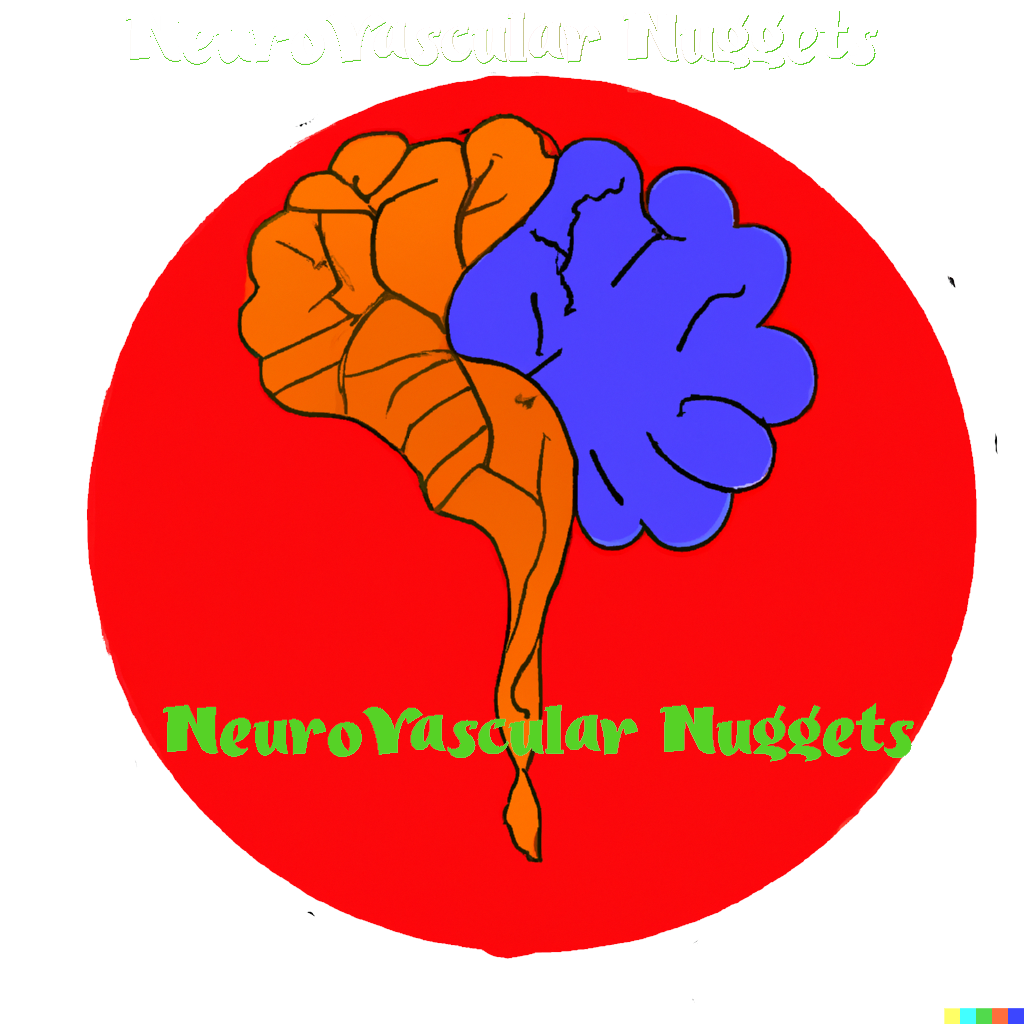Flow diversion for compressive unruptured internal carotid artery aneurysms with neuro- ophthalmological symptoms: a systematic review and meta-analysis Results Comparison to Previous Research Applications The results generally confirm flow diversion as an appropriate treatment for these aneurysms, though early intervention is key. The data help set expectations on likelihood of recovery and risks. This study […]
Neurovascular-Nuggets (10)
turning point in the nihilism surrounding surgery for ICH Based on my review, here are the key points about the results and findings: This article discusses the results of the ENRICH trial, which evaluated minimally invasive surgery plus thrombolysis (MIPS) compared to medical management for the treatment of spontaneous lobar intracerebral hemorrhage (ICH). The key […]
Neurovascular-Nuggets (11)
This is very important review that provides a comprehensive summary of mechanical cervicocerebral circulatory disorders in children, with several key implications: – It emphasizes that pediatric patterns differ substantially from adults for these conditions. For bow hunter’s syndrome, pediatric cases primarily involve the upper cervical spine (C1-C2) with vertebral artery dissection, while adults more commonly have […]
Immediate Statin After Acute Stroke Reduces Disability
MUNICH — Giving intensive statin therapy to patients with acute mild ischemic stroke or with high-risk for transient ischemic attack (TIA) immediately after onset significantly reduces the risk for a poor functional outcome compared with delaying treatment, without compromising safety, results of the INSPIRES trial show. The research, presented at the 9th European Stroke Organisation Conference (ESOC) on May 26, also […]
Ticagrelor May Reduce Brain Lesions After Carotid Stenting
MUNICH — Patients undergoing carotid artery stenting (CAS) may have fewer ischemic lesions and a lower lesion burden if they are given the reversible P2Y12 receptor antagonist ticagrelor rather than clopidogrel, another P2Y12 inhibitor, prior to the procedure, secondary endpoint results of the PRECISE-MRI trial suggest. More than 200 patients with carotid artery stenosis underwent magnetic resonance imaging (MRI) and were randomized […]
Cardiopathy No Basis for Choosing Anticoagulation in ESUS
MUNICH — Anticoagulation using apixaban (Eliquis) offers no benefit over aspirin in patients with embolic stroke of undetermined source (ESUS) who have atrial cardiopathy but no overt atrial fibrillation, suggest findings from the ARCADIA trial. The trial, which was halted early, randomized more than 1000 ESUS patients with atrial cardiomyopathy to apixaban or placebo. Results showed that apixaban did not improve […]
Post-Stroke Care Need to Improve Clinical Endpoints?
MUNICH — A multidisciplinary post-stroke care program failed to show a reduction in hard clinical endpoints over standard care after 1 year of follow-up, a new study shows, although it did achieve improvements in cardiovascular risk-related measures. Experts argued that the trial, presented at the European Stroke Organisation Conference (ESOC) 2023 on May 24, would […]
Targeting Von Willebrand Factor With An RNA Aptamer To Treat Stroke
Acute ischemic stroke is a leading cause of death in the US and in need of safer, more effective treatment options. Learn more about the stroke therapeutic landscape in the Drug Discovery Online guest column “Targeting Von Willebrand Factor With An RNA Aptamer To Treat Stroke” written by Basking co-founder and CMO Shahid Nimjee. He […]
Stroke in young
The incidence of stroke in young individuals (defined as those below the age of 45 or 50) in the Middle East and North Africa (MENA) region is not extensively studied, and data specific to the region may be limited. However, there is some evidence suggesting that the incidence of stroke in young individuals is rising […]

